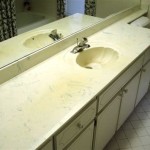Can 2 Bathroom Fans Share a Vent? Exploring the Feasibility and Implications
The efficient ventilation of bathrooms is crucial for maintaining air quality and preventing moisture-related problems like mold and mildew growth. Bathroom fans play a vital role in removing excess humidity and odors, contributing to a healthier and more comfortable living environment. A common query arises regarding the feasibility of connecting two bathroom fans to a single ventilation duct. This article will explore the intricacies of this practice, analyzing its potential benefits, drawbacks, and compliance with building codes.
The primary function of a bathroom fan is to expel moist air and contaminants from the bathroom to the exterior of the building. This process helps to control humidity levels, preventing condensation on surfaces, which in turn inhibits the growth of mold and mildew. Effective ventilation also reduces unpleasant odors and improves overall air circulation within the bathroom. Building codes often mandate the installation of bathroom fans in new construction and renovations, highlighting the importance of proper ventilation in these spaces.
The proposition of sharing a vent between two bathroom fans frequently stems from a desire to simplify installation, reduce material costs, or address space limitations within the building structure. However, the practice presents a range of considerations that must be thoroughly evaluated before implementation. These considerations pertain to airflow dynamics, backdraft prevention, noise levels, and code compliance.
Understanding the Airflow Dynamics
The fundamental principle governing the feasibility of shared venting lies in understanding airflow dynamics. When two fans operate simultaneously and are connected to a single duct, they may compete for airflow. This competition can significantly reduce the effectiveness of each fan, potentially leading to inadequate ventilation and negating the intended benefits. The key factor determining the success of shared venting is whether the duct is adequately sized to handle the combined airflow volume of both fans. If the duct is undersized, it will create backpressure, diminishing the performance of the fans and potentially causing them to work harder, leading to premature failure.
The airflow capacity of a bathroom fan is typically measured in cubic feet per minute (CFM). To determine if a shared vent is feasible, one must calculate the total CFM required for both bathrooms and compare it against the capacity of the existing ductwork. If the ductwork's capacity is insufficient, alternative solutions must be explored, such as installing a dedicated vent for each fan or upgrading the existing ductwork to a larger diameter.
Furthermore, the length and complexity of the ductwork influence airflow. Long and convoluted ducts create greater resistance, reducing the overall airflow rate. The number of bends and turns in the ductwork also contributes to airflow obstruction. For shared venting to be effective, the ductwork should be as straight and short as possible to minimize resistance and ensure adequate airflow.
Backdraft Prevention Mechanisms
A potential issue with shared venting is the risk of backdrafting. Backdrafting occurs when air from one bathroom is forced into the other through the shared duct. This situation can lead to the introduction of odors, moisture, and potentially contaminated air into the unoccupied bathroom. To mitigate this risk, backdraft dampers are essential. A backdraft damper is a one-way valve that allows air to flow in only one direction, preventing air from flowing back into the bathroom when the fan is not operating. These dampers are typically installed in the ductwork near each fan to isolate the airflow and prevent backflow.
The type of backdraft damper used is also crucial. Simple flapper-style dampers may not provide a complete seal and can be prone to leakage, especially in high-wind areas. More advanced damper designs, such as motorized dampers or spring-loaded dampers, offer a tighter seal and are more effective at preventing backdrafting. Motorized dampers are particularly effective as they automatically open and close in conjunction with the fan's operation, ensuring a positive seal when the fan is off.
Regular inspection and maintenance of backdraft dampers are essential to ensure their continued effectiveness. Over time, dampers can become clogged with dust and debris, hindering their ability to function properly. Periodic cleaning and lubrication can help to maintain the integrity of the dampers and prevent backdrafting issues.
Noise Levels and Sound Transmission
The acoustic impact of shared venting is another important consideration. Connecting two bathroom fans to a single duct can potentially amplify noise levels, especially when both fans are operating simultaneously. The ductwork can act as a conduit for sound transmission, carrying noise from one bathroom to the other. This can be particularly problematic if the bathrooms are adjacent to bedrooms or other quiet spaces.
To minimize noise transmission, several measures can be implemented. Wrapping the ductwork with sound-absorbing insulation can help to dampen vibrations and reduce noise levels. Using flexible duct connectors can also help to isolate the fans from the ductwork, reducing the transmission of vibrations and noise. Choosing low-noise fans with sones ratings of 1.0 or less can further minimize the overall noise impact.
The design of the ductwork also plays a role in sound transmission. Sharp bends and corners can create turbulence, increasing both noise and airflow resistance. Using smooth, gradual bends can help to minimize turbulence and reduce noise levels. Additionally, ensuring that the ductwork is securely mounted can prevent vibrations and reduce noise transmission.
Building Codes and Regulations
Compliance with local building codes and regulations is paramount when considering shared venting. Many jurisdictions have specific requirements regarding bathroom ventilation, including minimum airflow rates, ductwork sizing, and backdraft prevention. Failure to comply with these regulations can result in fines or the need to correct the installation.
It is essential to consult with local building officials or a qualified HVAC professional to determine the specific requirements for bathroom ventilation in the area. These professionals can provide guidance on ductwork sizing, backdraft prevention, and other relevant code requirements. Obtaining the necessary permits before commencing any ventilation work is also crucial to ensure compliance with local regulations.
Some jurisdictions may explicitly prohibit shared venting of bathroom fans, while others may allow it under certain conditions. If shared venting is permitted, it is typically subject to stringent requirements regarding ductwork sizing, backdraft prevention, and noise levels. It is important to carefully review the applicable codes and regulations to ensure that the installation meets all requirements.
In conclusion, while the concept of sharing a vent between two bathroom fans may seem appealing from a cost and installation perspective, a thorough evaluation of airflow dynamics, backdraft prevention, noise levels, and code compliance is necessary. The practice is not universally recommended and often requires careful planning and execution to ensure effective ventilation and prevent potential problems. Professional consultation is advised to determine the feasibility and ensure compliance with all applicable regulations.
Hvac Talk Heating Air Refrigeration Discussion

How To Use An In Line Exhaust Fan Vent Two Bathrooms Diy Family Handyman
Hvac Talk Heating Air Refrigeration Discussion
2 Bathroom Fans Connected To 1 Roof Vent Diy Home Improvement Forum

Can Bathroom Exhaust And Dryer Share Same Outside Duct Diy Home Improvement Forum

Two Bathroom Vent Fans On One Roof Shorts Diy
Can I Vent Multiple Bathroom Fans To The Same Hole Using Flexible Duct And Connectors Or Will They Blow Air Into Each Other Instead Of Venting Outside Quora

Venting A Bath Fan In Cold Climate Fine Homebuilding

Common Exhaust Duct Not Shared By Fans In Separate Dwellings Building America Solution Center

How To Install A Bathroom Fan Diy Family Handyman
Related Posts






